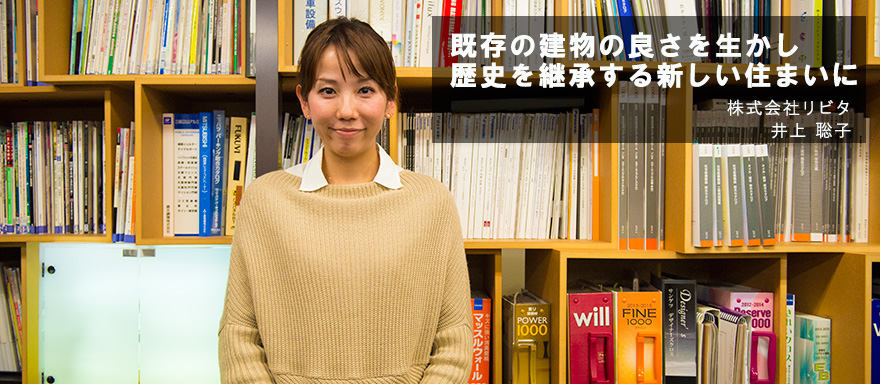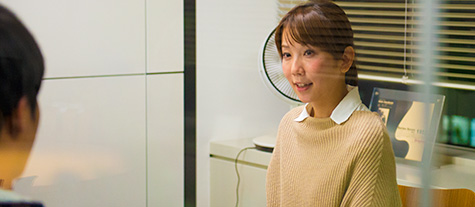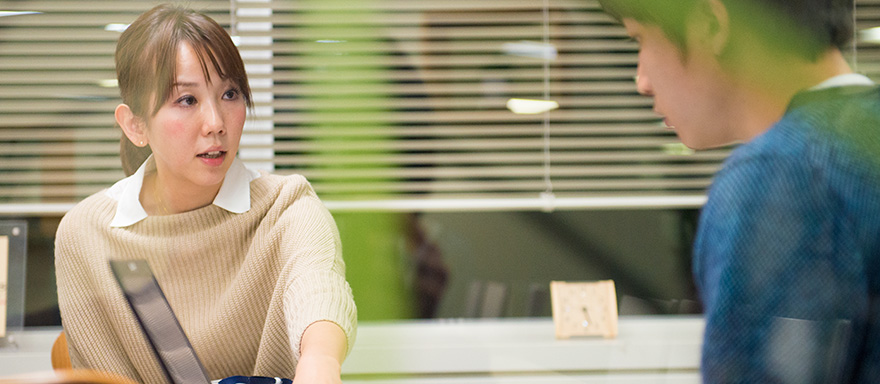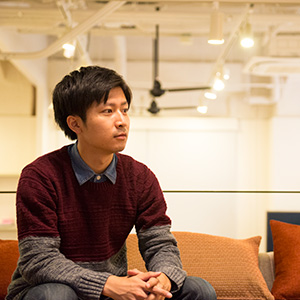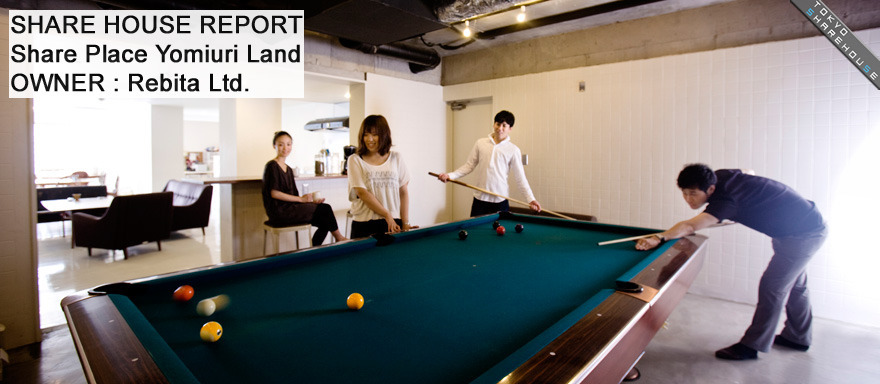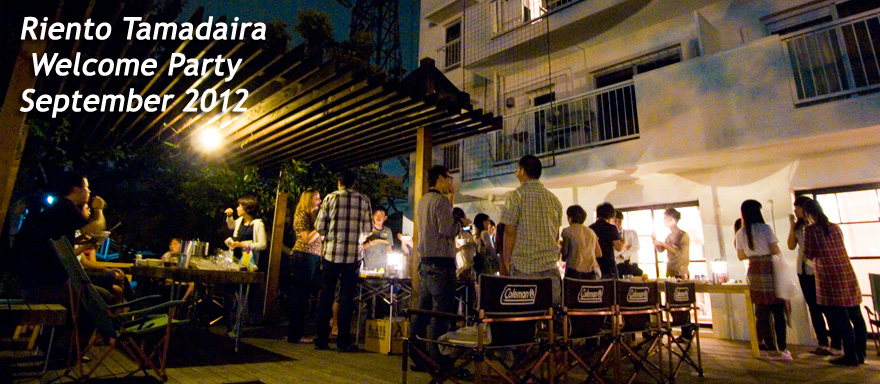Satoko Inoue, chief consultant at ReBITA
Here at Tokyo Sharehouse we have been focusing primarily on individual share house properties themselves, however part of the shared housing appeal lies in establishing relationships between others and the stories that these relationships create.
Why share houses? What brings people to them?
Wanting to find out these things as well as how everyone involved fits into the picture, we have started with interviewing people.
For our first interview we will be talking to Ms. Inoue from ReBITA.
The Share Place God has graced us with his presence.
Ms. Inoue has handled a great number of the Share Place series of properties managed by ReBITA. She now inspects existing properties with her own eyes to determine the next plan of action, and first instincts and impressions of a building are important . Ms. Inoue says that she has seen many properties that weren’t share house materiel, however when she does discover a place that matches her plans perfectly she goes around the office telling her coworkers that the ‘Share Place god has graced us with his presence!’
During the interview the Share Place gods were surely smiling as we talked about the appeal of Share Place Higashi Kanagawa 99 (from hereon SPH99), which opened on December 1, so please read on.
- ---Ms. Inoue, you were in charge of the planning of SPH99. Can you tell us a little bit about how it all started?
- Ms. Inoue
-
SPH99 is a 12-minute walk from nearby Higashi Kanagawa station so it’s a little far, but it’s at the top of a slightly elevated slope so the first time I went to check out the place I felt as though it was quite close to the sky. You can even see Mt. Fuji on a clear day because there is nothing around to obstruct the view, so I wondered if I could come up with an idea for such an outstanding location.
- ---The location is indeed excellent, and I heard that this share house has two buildings, which is quite rare.
- Ms. Inoue
-
That’s right, these two buildings were originally facing each other so we paid particular attention to how to connect them together. We also tried to use the architectural barrier to our advantage and created a variety of smaller areas within the house. It’s great for everyone to hang out together in a large area, but I believe it is also important to have other areas that can be used depending on the tenants mood and purpose.
- ---What kind of ‘small areas’ have you created specifically?
- Ms. Inoue
-
While there is of course an extensive, spacious lounge essential for a large-scale share-house property, there are days when you just don’t feel like hanging out with a whole bunch of people. With this in mind we have created little hideouts in various places throughout the house. For example, there is a mini lounge suitable for small gatherings, a theater room, a relaxing Japanese-style room and even a multipurpose room.
- ---Can you tell us about the space in between the two buildings?
- Ms. Inoue
-
That area is an open terrace between the two buildings so the house feels like its own little town, as I’ve heard other people in the neighborhood call it. There is also a lawn with a vegetable garden and leisure area from which tenants can hear the laughter of local children.
We also plan to hold events in the future. - ---Getting involved with the locals sounds fun, doesn’t it! When creating this kind of environment is there anything that you pay particular attention to?
- Ms. Inoue
-
What we try to do is kind of leave room to breathe without going overboard. This is because it is the tenants who we want to cultivate the share house environment. We were also conscious of a kind of private atmosphere where tenants don’t have to hang out with everyone in the communal areas, yet are not totally disconnected from the others around them.
Aiming to become a Yokohama landmark
There are several types of rooms to choose from according to the needs of the tenant. For example, the garage-type room has space for a bicycle or motorbike inside, allowing you to tinker with it at anytime you please. There is also a loft-type room with a high ceiling.
Both the communal areas and private rooms are spaciously comfortable, perfect for those who desire a slow and relaxed lifestyle, or those who wish to immerse themselves in their own hobbies as its uses are endless. A place full of possibilities, this house will surely become a Yokohama landmark in no time.
Continuing on we ask Ms. Inoue about herself.
- ---Ms. Inoue, what made you become involved in this industry?
- Ms. Inoue
-
My previous employment was in an electrical manufacturer’s real estate division planning and selling new properties and lots. We would tear down buildings -even if they were relatively new, 20-year old buildings- to make way for new projects starting again from level one, and I felt a kind of opposition to destroying things that could still be used.
- ---So you always had an interest in renovation?
- 井上さん
-
That’s right. Making use of the original quality of an existing building and restoring it into a new building retaining that history - it’s the kind of work I always thought I wanted to do. Or I guess I gradually began to realize it since I was always working with newly-constructed buildings in my previous job. Also, my grandfather worked in construction so I probably always had an underlying awareness of the industry, and somehow formed an interest in it myself.
- ---And what about share houses?
- Ms. Inoue
-
I actually lived in Canada for 6 months as an exchange student, and during that time I stayed in a large dormitory. Looking back on it now I feel that it was quite similar to a shared housing environment, and I asked myself why there wasn’t that kind of culture here in Japan.
- ---I see. Hearing about your past it seems as though your experiences have lead you to your current work.
- Ms. Inoue
-
I’ve never thought about it that way, but I guess so. My experiences with previous employment and living overseas must certainly have led me to this current job.
- ---A little bit of experience goes a long way, right! So, with all of this experience under your belt, can you tell us what you think the best thing about your job is?
- Ms. Inoue
-
We always run into architectural problems when converting existing properties into share houses, but I personally think that rather than having the freedom to design things as you please it is much more fun working to achieve the best results within the given limitations. But with share houses, it’s not simply over when the construction is complete, but rather it begins from there. The best thing about it is communicating directly with the people living in the place you created through events and the like.
- ---It must be great to interact with the people living in the houses you create! So finally, a word to those thinking about living in a share house?
- Ms. Inoue
-
Hmm, let’s see… if you live in one of the share houses managed by ReBITA, you will find happiness. (laughs) The staff really put their whole hearts into planning and running the houses and I’ve seen the results with my own eyes! We have had tenants who are like completely different people on the day they finally leave the house compared to when they first arrived! We really want people to gain experiences in the house that add a little bit extra to their lives, so if any of you out there are interested definitely come on over and check out the ReBITA share houses!

